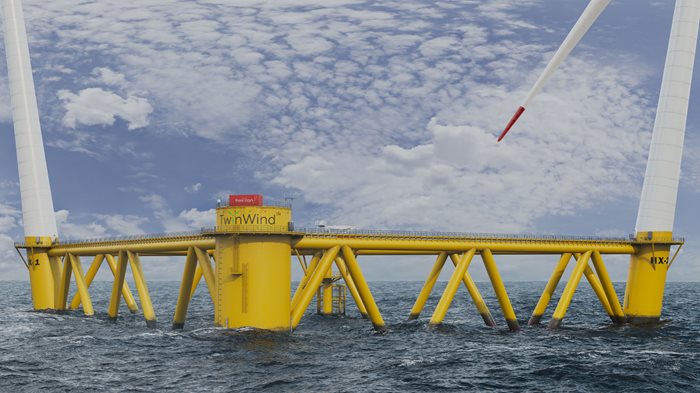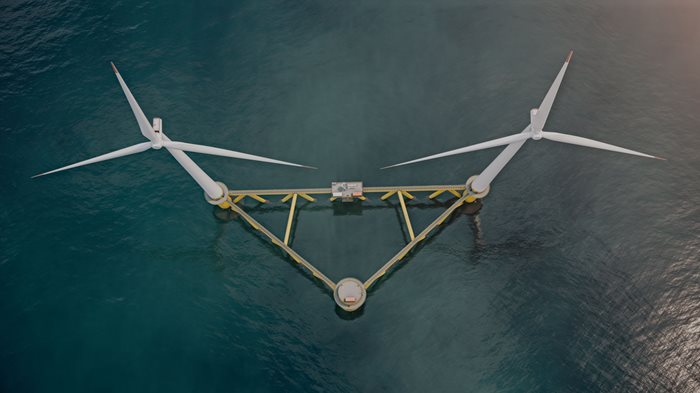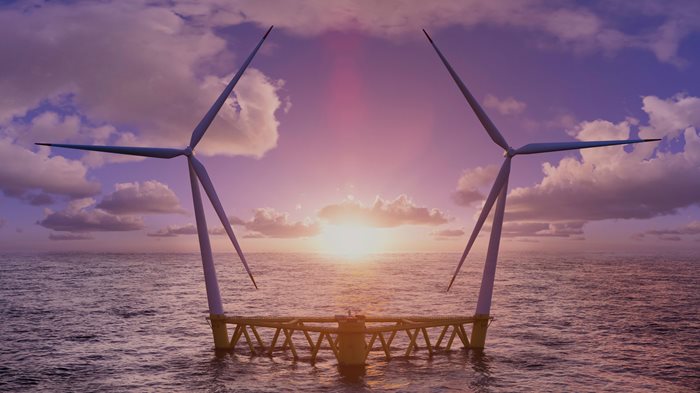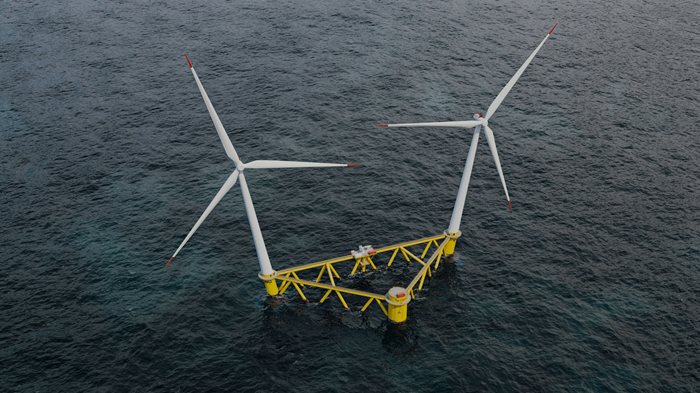To reach its target of 1 GW of offshore floating wind power by 2030, the U.K. government must provide environments in various locations to prove floating wind technologies. The government’s ambitious target is nearly nine times more than the current volumes worldwide. With the first Contracts for Difference specifically for floating wind due to open in December, I will explore lessons from past renewables subsidies and consider how CfDs, the government’s main mechanism for supporting low-carbon electricity generation, could help to successfully establish a world-leading floating offshore wind industry and supply chain in the United Kingdom.
Creating opportunities in multiple regions

Using a 100 GW offshore wind deployment scenario, floating offshore wind would create more than 29,000 U.K. jobs and deliver an anticipated £43.6 billion in U.K. gross value add by 2050.
The phasing of past offshore wind subsidies allowed multiple regions, including Northumberland, the Humberside, Teesside, and the East of England, to develop offshore wind supply chain clusters. It has been reported that the £75 million government investment in ABLE Marine Park in Humber unlocked more than £338 million in private investment.
While I’m encouraged to see the government’s recent announcement of £160 million for the development of ports and factories to support floating wind, locations in the Celtic Sea will only truly benefit from projects identified in future CfD allocation. This funding is unlikely to benefit technology or regions in the near term since port developers will be unwilling to invest without a clear pipeline of work. The subsidy allocation opening this December would ensure confidence in the market.
The Celtic Sea, with its combination of deep waters and strong winds, could provide Cornwall, Wales, and the South West with similar benefits as those given to the North East and create a new economic cluster that builds on the region’s strong industrial and maritime heritage. Investment would certainly help to deliver on the nation’s levelling up agenda by creating jobs, developing supply chains, and stimulating regional growth. Managed well, there is the potential to export solutions, bringing wider economic benefits.
ORE Catapult identified the South West as one of only two areas available to England and Wales for deploying floating wind. Kick-starting the supply chain development in the South West, alongside that in the North East, will ensure greater competition and U.K. content further down the line. Limiting regional development to the North East would leave the Celtic Sea supply chain playing catch-up for some time to come. Increasing the regional spread will also help avoid supply chain bottlenecks, as highlighted by Catapult.
Having eggs in multiple baskets

At this early stage of the emerging floating wind sector, the best technological solution is not yet known. A variety of floating technologies with associated cost reductions are therefore needed to advance the sector, ensure competition, and ultimately deliver value to consumers when commercial projects come to market. The government’s support of multiple demonstration projects is therefore essential; however, the current floating offshore wind subsidies and low spend (minima) are set up to support only one demonstration project.
It is clear to see the correlation between innovation and subsidy support when we look back the beginning of offshore wind generation in 2006. At that time, the House of Commons Environmental Audit Committee assessed that offshore wind was being insufficiently funded as it was in direct competition for subsidies with onshore wind and solar. The committee questioned whether policy and regulatory framework was doing enough to motivate lower-carbon generation on the scale required. It recommended a modification to the support mechanism of the time (Renewable Obligation Certificates) to enhance offshore wind. This thinking ultimately fed into the establishment of CfDs and resulted in a significant increase in the investment in and build out of offshore wind. Importantly, multiple solutions to reduce the cost of offshore wind were identified after this policy change during a period of high government support, including an increase in turbine size, larger monopiles, jackets, suction buckets, and gravity bases. It begs the question, how many of these solutions would have been investigated without the higher level of subsidy support?
Many in the industry also suggested that the small number of projects supported per CfD round (generally just one solution) hampered the scale of the build out in Scotland, arguing that development was much slower than it might have been, only ramping up since 2016.
Reaching the U.K.’s 2030 target of 1 GW of floating wind will require a considerable number of programmes around the U.K., so we shouldn’t and can’t limit ourselves to just one floating wind technology solution. Given that the Committee on Climate Change indicated that the U.K. could require up to four times the amount of renewable generation from today’s levels, we also cannot wait longer than absolutely necessary for multiple solutions to reach the market. I suggest that the amount spent by the government in CfD should follow the precedent set in 2006 and that the minima spend in December’s round four (AR4) for floating solutions be increased to sustain more than one technology.
Appreciating the essential role of demonstration and stepping-stone projects

Catapult and Renewables U.K. have outlined the need to support pre-commercial projects in the Celtic Sea. These stepping-stone projects are essential to creating the floating wind industry in the South West and should be considered not only for the mega-watt capacity they can generate but for their value in proving technology and building skills and supply chains to enable larger facilities to follow. For example, TwinHub, a 32 MW facility in the Celtic Sea is kick-starting the local supply chain development and investment, which is essential to enable larger 100 MW and 300 MW generating projects to be successful in future CfD allocations.
Analysis suggests that by 2040 the Celtic Sea needs to be generating 3.4 GW of the UK’s 100 GW goal. Limiting one technology in December will jeopardise the region reaching that target.
Striking the right price to build local capacity

A hard lesson learned from the U.K.’s fixed bottom offshore wind market boom was balancing the agreed price government paid for the power generated (the strike price) with the need for U.K. project content including jobs creation and opportunities for suppliers. There we saw that chasing a lower price can lead developers to look for labour and suppliers outside the U.K. Retrofitting a U.K. supply chain once competition is established is challenging and costly. We also witnessed the supply chain bidding artificially low prices to establish a track record in the industry. This has been identified in subsequent analysis that the predicted cost reductions in offshore wind have not yet been demonstrated. We want to be sure that the floating wind industry maximises its benefits for U.K. plc and maximises export potential, especially during the CAPEX phase of a project, unlike in fixed foundation offshore wind.
Floating offshore wind generation presents an enormous opportunity for clean energy diversification, and it is vitally important for the U.K. to reach its net zero commitment. The need for floating solutions will become more apparent as we exhaust the sites suitable for current renewable solutions. By investing wisely now, the U.K. can be at forefront of this emerging industry. I do hope that we’ve learned the lessons from the past to set up offshore floating wind for success. We must. Our planet cannot wait.

